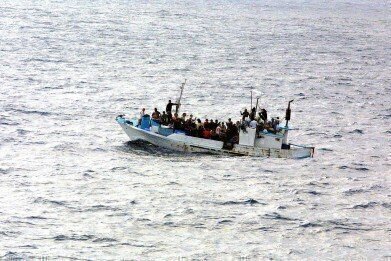Business News
UN Adds Climate Change to Refugee Report
Jul 13 2020
Three times as many people were driven from their homes by natural disasters such as cyclones, droughts and floods as they were by war and conflict in 2019. Those are the findings of the United Nations’ Global Report, prompting the body to add climate change as a legitimate reason why refugees might flee their home country for the first time.
With climate change only expected to become more pronounced and extreme weather events predicted to become more commonplace in the coming years and decades, the issue is likely to deteriorate going forwards. In fact, a World Bank report from last year said that it expected there to be as many as 140 million so-called “climate refugees” by 2050 unless drastic, affirmative action is taken urgently.
Concerning reading
In 2019, over 1% of the entire human populace was forced to uproot themselves from their home and seek refuge elsewhere. That equates to 1 in every 97 people on the planet. 24.9 million of that total figure were driven away from their homes by disasters such as Cyclone Idai, which is one of the worst ever tropical cyclones and which afflicted parts of Africa and the Southern Hemisphere.
For context, that 24.9 million people is three times higher than those who were displaced by violence, conflict and war, which is often thought as the chief contributing factor for refugeeism. It’s unsurprising, then, that the UN’s High Commissioner for Refugees (UNHCR) included climate change on its list of contributing factors to the problem – the only surprise is that it’s taken so long.
“Climate change is also contributing to more gradual environmental phenomena such as drought, desertification, and rising sea levels,” explains Matthew Saltmarsh, a spokesperson for the UNHCR. “[These factors] can make land uninhabitable and will drive displacement over time. These longer-term impacts of climate change will have major consequences on people, cities and communities.”
A deepening problem
What is even more concerning is that 85% of the world’s refugees are currently seeking shelter in developing parts of the globe which are, themselves, highly susceptible to the adverse effects of climate change. That means that there is the potential for those who have already been forced to flee their homes could have to do so for a second or even third time, while the devastation wrought by extreme weather events could rule out returning to their homeland altogether.
In order to combat the downward spiral of climate change and people displacement, governments around the world must put in place better measures of dealing with the phenomenon. That means installing advanced monitoring measures for natural flood management, providing water and food security in the face of drought and famine and diverting funds to rebuild after hurricanes, cyclones and storms hit. Most important of all, however, is mitigating the impacts of climate change by reducing our carbon footprint and preventing a global temperature hike of more than 1.5°C.
Digital Edition
IET 34.2 March 2024
April 2024
Gas Detection - Biogas batch fermentation system for laboratory use with automatic gas analysis in real time Water/Wastewater - Upcycling sensors for sustainable nature management - Prist...
View all digital editions
Events
Apr 30 2024 Melbourne, Australia
Apr 30 2024 Birmingham, UK
May 03 2024 Seoul, South Korea
May 05 2024 Seville, Spain
May 06 2024 Minneapolis, MN, USA



















